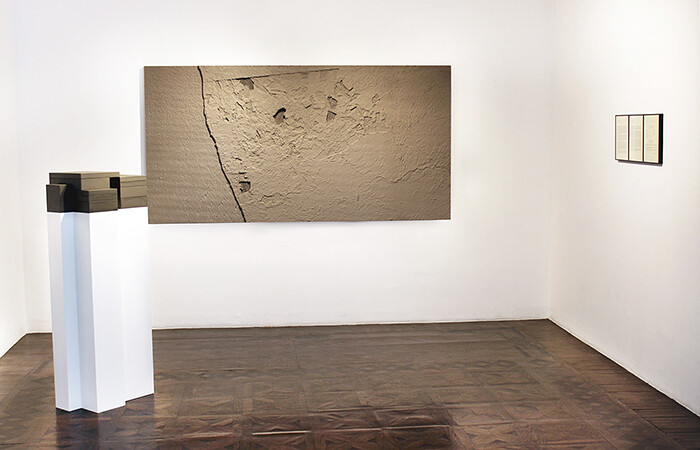The recent disappearance and alleged assassination of 43 students from Ayotzinapa Normal School in the southern city of Iguala, Mexico, has once again raised the alarms of an entire country already shocked and affected by corruption, violence, and poverty. But while for years organized crime has spread violence, the disappearances of citizens, and the sowing of corpses throughout the country—not on a few occasions under the tolerance or complicity of authorities—some initiatives seeking to restructure the country’s broken social fabric have simultaneously flourished across Mexico. Among them is the ambitious La Granja Transfronteriza [Transborder Farmlab], an experimental center created by the interdisciplinary artist collective Torolab—Raúl Cárdenas Osuna, Ana Martínez, Bernardo Gutiérrez, Enrique Jiménez, Shijune Takeda and Rodolfo Argote—aimed to establish and sustain models of fighting poverty and violence in Camino Verde, Tijuana, a low-income urban area that functions as a microcosm of Mexico: a space ridden with economic and social inequalities that lacks a sense of community, and where distrust between residents and authorities seems insurmountable.
The strategies undertaken by La Granja Transfronteriza to generate better living conditions in this segregated region started by building trust among its residents. Creative writing workshops were key to opening communication channels that allowed Torolab to get acquainted with the needs and aspirations of Camino Verde residents, mostly comprising single mothers and migrants from different rural parts of the country. A culinary laboratory, computing facilities, a community garden, training and employment opportunities, and other means of knowledge-sharing were developed in order to ameliorate the social fabric of the area and generate sustainable models of economic growth. In addition, Torolab has made significant links with other local and international organizations—such as governmental agencies, companies, museums, and universities—to make the project feasible and stronger.
Torolab’s exhibition at Galería OMR in Mexico City can be read as a collection of symbolic objects that narrate and deconstruct the project in Camino Verde. The exhibition opens with a typed paper triptych titled Recipe: Elvia – Pork trotters in vinegar (2014), an autobiographical text that recounts the migration and settlement story of a woman from Camino Verde. The conversational text, accompanied by a family recipe, uses food to transverse the public and the intimate, perhaps conditions that drove Torolab to make a recipe book as its first workshop activity. In the same room, a diagram on MDF documents official statistics on Tijuana’s economic, social, and environmental conditions in relief. The more sunken the area, the more vulnerable the district is. Camino Verde stands out in Map: 16 x 16 Decision Layers (2014) as a territory deeply immersed in social issues that urgently needs restructuring. Next to this is Program I: Blocks Change of Conversation (2014), a model of the building that houses La Granja Transfronteriza. What seems an impenetrable edification, as is the neighborhood itself, houses empowering social relationships. These are represented, to a certain extent, in the video Recipe: Camino Verde (2014).
In a second room, a floating bar-shaped installation made of newspapers (3 Years of News 26.4 degrees, 2014) symbolizes three years of negotiations with the government to restructure a badly built canal that divided the neighborhood into two contending territories. A few meters away is The Endless City (1961) by Mathias Goeritz, an elegant, curvy, ascendant wooden tower-shaped sculpture, and homage to architect Frederick Kiesler. With the inclusion of Goeritz’s model and his transversal connection to the De Stijl group (of which Kiesler was part), Torolab emphasizes collective work and the construction of an emotional architectural space. Also, using the crate from Goeritz’s aforementioned sculpture, a Neoplastic-style table (Work Room: The Endless Table (Goertiz-Kiesler), 2014) has been constructed in the gallery space, where a few meetings have occurred; however, no substantial documentation can be found in the files or blog of the exhibition. The workroom, quiet most of the day, appears more frequently as a static installation than an active relational space.
Considering that La Granja Transfronteriza is in permanent development, it seems to be a difficult project to confine to the space of a gallery, especially given the fact that the very nature of the initiative transcends the sometimes irrelevant role of museums and galleries as intermediaries between artists and audiences. In this case, more than the artist or the manner in which the show is exhibited, what is important are the consequences of the project as they pertain to the life and well-being of the residents of Camino Verde, but this is somehow absent in the show. Were the workshops useful? Are the initiatives ongoing? And, most crucially, what are the residents’ opinions about the future of the project?
Unfortunately, these aspects seem to be outside the purview of the exhibition, and so it fails to reflect the relevance of the project using the voices of its very own actors, who are, in the end, the core of this work. In this sense, the exhibition reflects only the surface of La Granja Transfonteriza rather than its substance. But given the current social situation in Mexico, and while the Ayotzinapa students remain unlocated, the show displays a praiseworthy example of how engagement and creative community work can make the difference for spaces that have been caught in the crossfire between crime and government ineptitude to intelligently ameliorate the social fabric with resources besides cash transfer programs or heavy policing.








